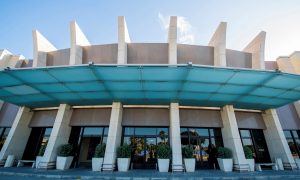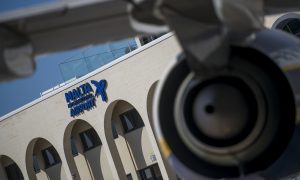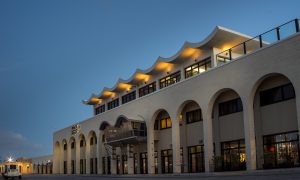Historical Via Sagra at Ta’ Ġieżu to get a new lease of life thanks to the Malta Airport Foundation
The Malta Airport Foundation is pleased to announce that it is supporting the conservation and restoration of the Via Sagra found inside the Church of Saint Mary of Jesus – better known as Ta’ Ġieżu – in Valletta.
Information about this Via Sagra, particularly the different artists that executed the 14 paintings depicting moments from the Passion of Christ, is scant. However, there is little doubt that this church had been the first to witness the devotion to the Via Sagra, which was brought from the Holy Land to the Maltese Islands. The establishment of the stations of the Cross inside this church can be traced back to, at least, the first half of the eighteenth century.
“Given the significance of this Via Sagra and the church that houses it, which is part of Girolamo Cassar’s legacy, the Foundation could not pass up the opportunity to facilitate this project. While Ta’ Ġieżu is one of Valletta’s better-known churches among locals, we feel that this project, and the light it is expected to shed on the authors of the 14 paintings, could further raise the profile of the church among visiting tourists,” said Malta Airport Foundation Chairman Josef Formosa Gauci.
“Foreign visitors are attracted to the stations of the Via Sagra mostly for their artistic beauty, while for locals these stations represent an opportunity for prayer and meditation on the Lord’s Passion. The latter aspect is very important to us, and we feel that the Via Sagra’s revived beauty will help people continue to pray, particularly during Lent when our church becomes one of the most frequented on the islands,” said the guardian of the church Fr Ramon Farrugia, whilst highlighting the historical significance of this Via Sagra.
While very little is presently known about the artists that executed the paintings, the Baroque sculptured frames that encase them are attributed to the artist Abram Gatt (1863-1944). The project will see the phased restoration and conservation of both the paintings and their frames, with the first four paintings having already been dismounted to reveal an inscription indicating the authorship and the year of execution – 1738 – on the verso of one of them.
“We expect to make other similar discoveries during the project. Studying the technique employed in each of the paintings, which were evidently executed by different artists, together with the colours used can also lead us to their identities. Our ultimate aim is to recover the appearance the artists had intended for these sacred paintings centuries ago,” said Valentina Lupo from Atelier del Restauro, the company that has been entrusted with this project.
To achieve the desired results, the paintings will undergo several processes including cleaning, disinfestation, infilling, the re-integration of any losses and, finally, the application of a protective coating. On the other hand, any losses on the frames will be integrated by applying gold leaf. Each stage is also being documented so as to leave as much information as possible for future researchers and restorers.
To learn more about the Malta Airport Foundation’s projects, particularly its investment in the preservation of the islands’ artistic heritage, click here.
Published on: 06.04.23



